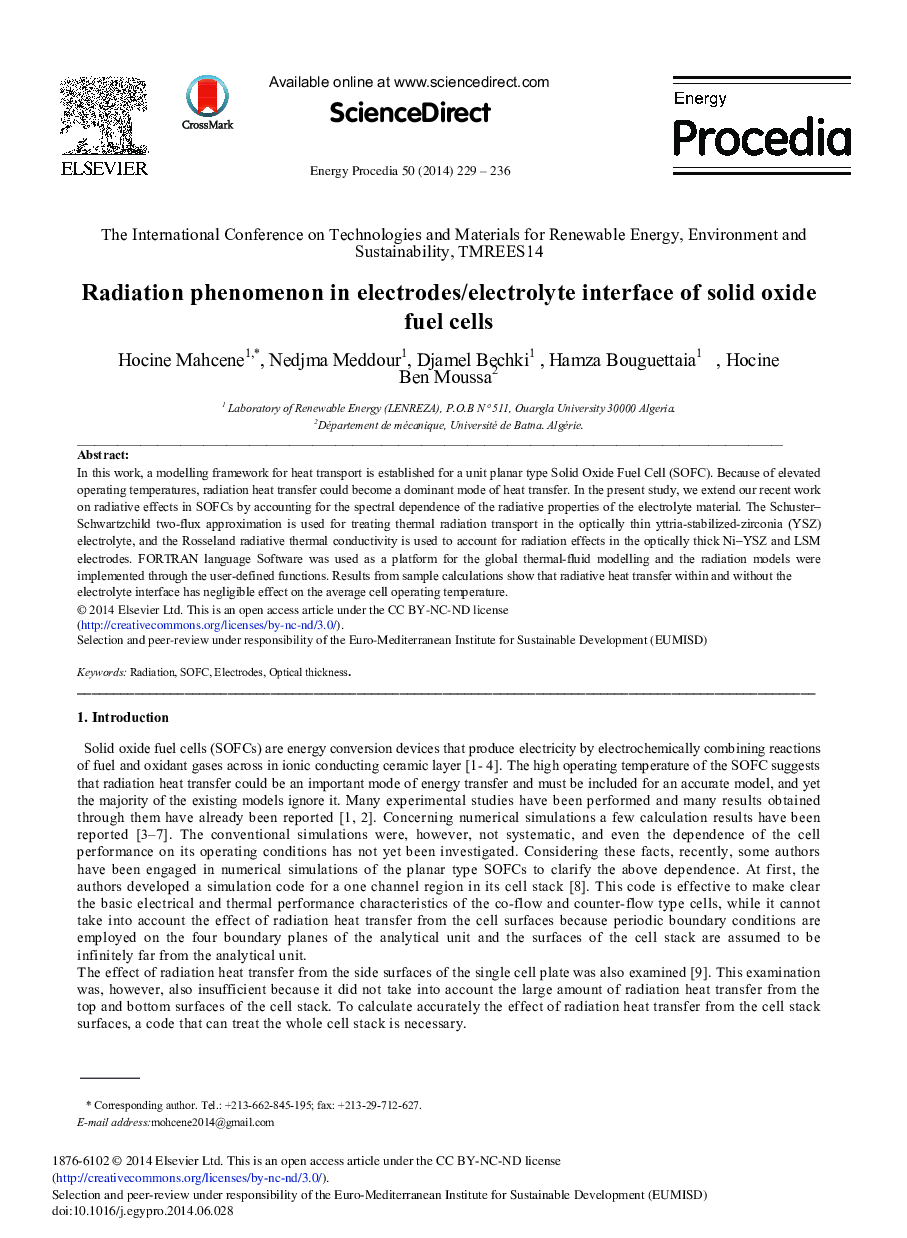| Article ID | Journal | Published Year | Pages | File Type |
|---|---|---|---|---|
| 1511096 | Energy Procedia | 2014 | 8 Pages |
In this work, a modelling framework for heat transport is established for a unit planar type Solid Oxide Fuel Cell (SOFC). Because of elevated operating temperatures, radiation heat transfer could become a dominant mode of heat transfer. In the present study, we extend our recent work on radiative effects in SOFCs by accounting for the spectral dependence of the radiative properties of the electrolyte material. The Schuster– Schwartzchild two-flux approximation is used for treating thermal radiation transport in the optically thin yttria-stabilized-zirconia (YSZ) electrolyte, and the Rosseland radiative thermal conductivity is used to account for radiation effects in the optically thick Ni–YSZ and LSM electrodes. FORTRAN language Software was used as a platform for the global thermal-fluid modelling and the radiation models were implemented through the user-defined functions. Results from sample calculations show that radiative heat transfer within and without the electrolyte interface has negligible effect on the average cell operating temperature.
